Split is a city where you can easily spend a few days. The atmosphere is very pleasant and there’s plenty to see. Climb Marjan Hill for a stunning view, enjoy delicious food at one of the many terraces, take a fun boat trip and stroll through the narrow streets of Diocletian’s Palace. But during a city trip, it can also be interesting to explore nearby areas. Curious about what else Dalmatia has to offer? Here’s a list of things to see and do in the area around Split.
What to do near Split
Dalmatia is home to many charming small villages and they’re often surprisingly delightful! However, you’ll likely want to visit some of the more famous spots too, especially if it’s your first time in Croatia. Near Split, there are several small towns that you really should check out.
Primošten (60 kilometers)
We begin with the small town of Primošten. With a population of just 3,000, what makes this place so special is the peninsula located in the sea. From a distance, you can already spot Primošten. Right next to it, there is a second peninsula. This peninsula, where Hotel Zora is located, is quite forested, unlike the town of Primošten. The peninsula of Primošten is full of authentic buildings. It’s a pleasure to wander through the narrow streets here or enjoy delicious food at one of the terraces by the harbor. Primošten is fairly “touristy,” but for some reason, I can really enjoy it here. It’s just a little gem of a town!
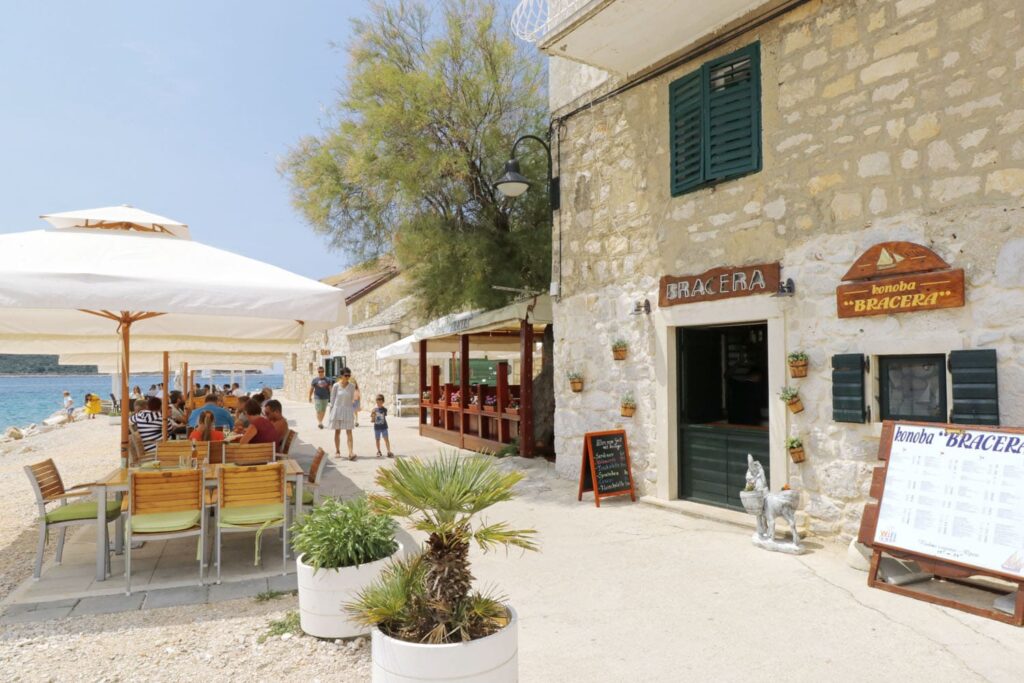
Brač (20 kilometers)
The island of Brač is located directly off the coast of Split. With an area of 396 km², Brač is the third largest island in the Adriatic Sea. Brač also boasts the highest point in the Adriatic, Vidova Gora, which stands at 778 meters. From Vidova Gora, you get a stunning view of the island of Hvar and a part of the coastline south of Split. One sight you can’t miss from this spot is Zlatni Rat, the famous pebble beach with its constantly changing V-shape. It’s beautiful to see from above, but also lovely to visit the beach itself. Be sure to also check out nearby Bol, the oldest town on Brač.
Brač is home to fertile valleys and hills, perfect for scenic walks. One recommended hike is to Blaca Monastery (Pustinja Blaca), a fascinating site to explore the history of monks on Brač. It’s also a great place to cool off after a warm hike. Brač can be reached by ferry from Split and you can even take your car on board, allowing you to enjoy a mini road trip around the island. Alternatively, you can rent a scooter in Supetar, the largest town on the island where the ferry arrives. End your day with a drink and/or snack at one of the terraces by the harbor in Supetar, which has a charming and authentic atmosphere.
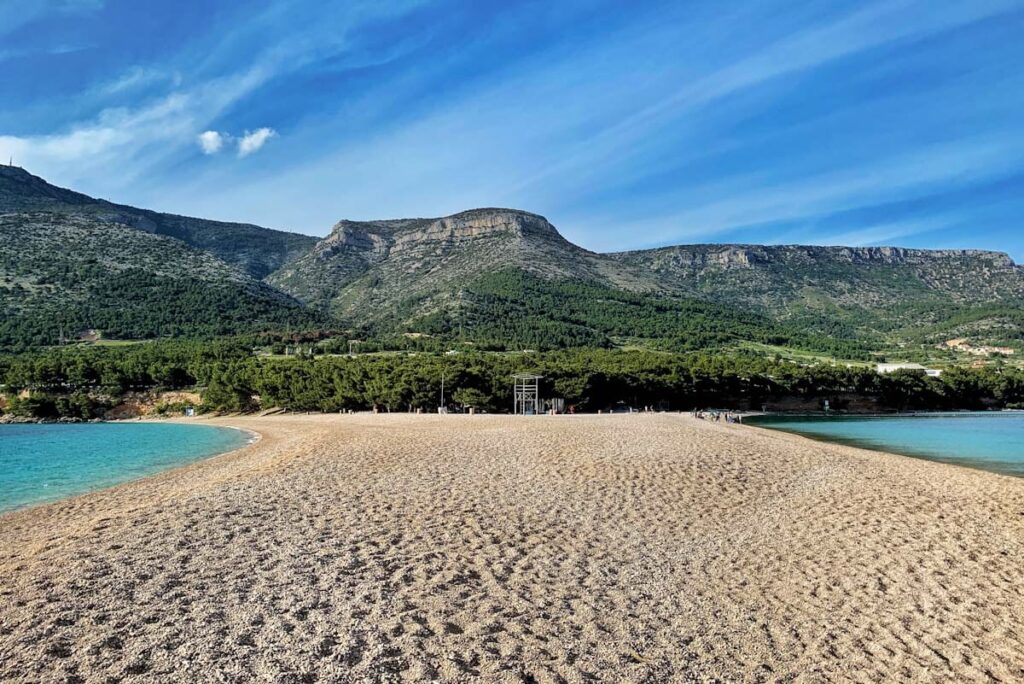

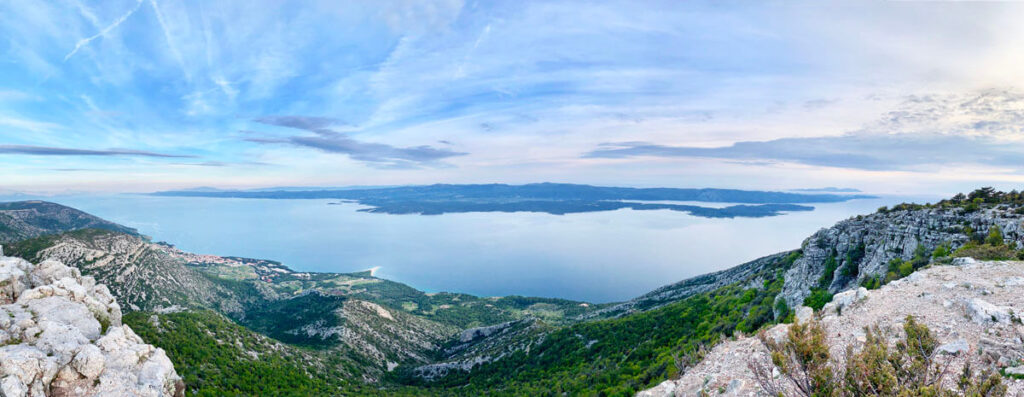
Trogir (28 kilometers)
Trogir is located on a small island, measuring 500 meters by 250 meters, very close to the coast. It’s so close that you can reach it via a short bridge. Trogir is a city with a rich history. The Romans, Greeks and Venetians have all left their marks on Trogir. Within the city walls, you’ll find several notable sights, including the St. Lawrence Cathedral, the Kamerlengo Fortress, the City Loggia and the North Gate. For this reason, the town was added to the UNESCO World Heritage List in 1997.
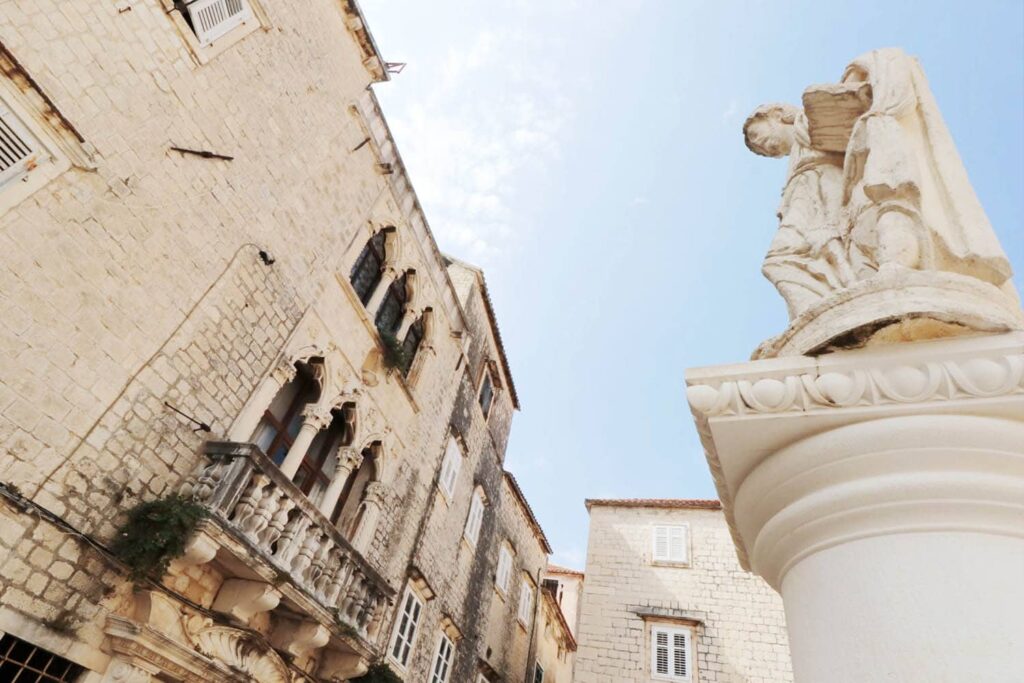
Klis Fortress (15 kilometers)
Looking for more history? Then you can drive to Klis, a small village where you’ll find Klis Fortress. Fans of Game of Thrones will recognize this location immediately. Several scenes from Game of Thrones seasons 4, 5 and 6 were filmed here, as well as at Diocletian’s Palace in Split. The history of Klis Fortress dates back centuries, even before the Roman era. One of the most important periods in the fortress’s history was in the 15th and 16th centuries. The Ottoman Empire, the Venetian Republic and the Habsburg Monarchy all did their best to take (and hold) the fortress. For many years (if not centuries), the fort was captured and recaptured.

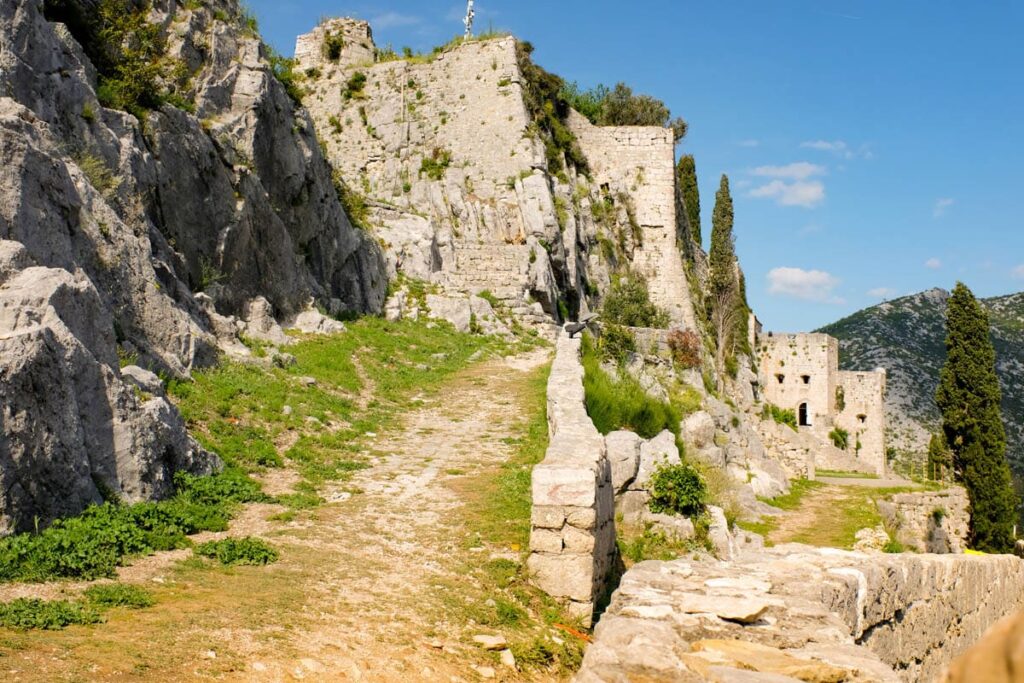
Šibenik (80 kilometers)
Šibenik is also a beautiful city to visit. Like Trogir and Split, Šibenik is home to UNESCO heritage. In 2000, the St. James Cathedral, built in the mid-15th century, was added to the World Heritage List. Šibenik is about 80 kilometers from Split, just an hour’s drive. Šibenik is great for a leisurely walk through the city. Not only does it feature lovely squares, narrow alleys and cobblestone streets, but the city’s residents also deal with elevation changes, which means there are many stairs to be found throughout the center of Šibenik.
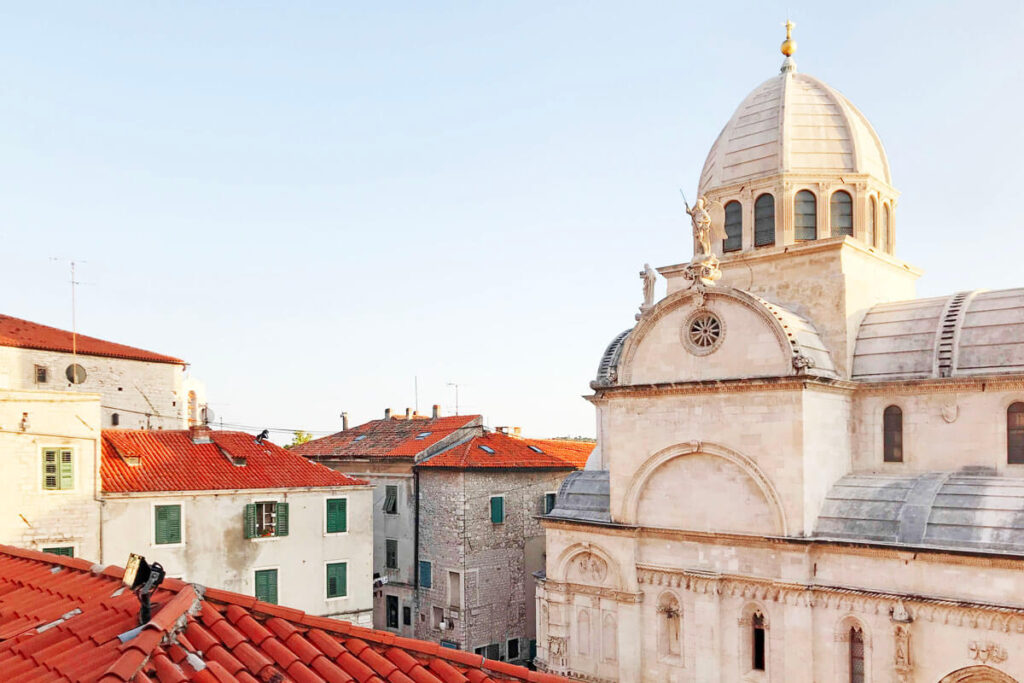
Krka Waterfalls (80 kilometers)
The Krka Waterfalls are less known than the Plitvice Lakes but are just as stunning, perhaps even more beautiful. You can enter Krka National Park either on foot or by boat. The park features a remarkable elevation difference of 242 meters, which means it’s filled with waterfalls. The water of the Krka River flows downward, passing seven “official” waterfalls along the way. Several of these waterfalls consist of multiple cascades, with the water in between being crystal clear and blue. It’s a beautiful park to explore on foot.

Trilj (40 kilometers)
The town of Trilj (Tilurium), located 40 kilometers from Split, was an important strategic site during Roman times. Three major roads intersected here at the Pons Tiluri bridge. On a higher plateau, there was a large military camp (12 hectares) where as many as 5,000 soldiers were stationed. From the camp, the soldiers had a clear view of the crossroads. A large part of the military camp lies beneath the village of Gardun, but since 1997, archaeologists have been actively excavating and studying specific points. A section of a sleeping quarters has already been uncovered, at least the walls, as the wooden roof didn’t survive the centuries.
The walls of the sleeping quarters are open to visit, but they are located on private property. You can check in with the residents, who will allow you to walk across their land to reach the excavations. In Trilj itself, you can also visit the Trilj Regional Museum. The museum displays excavated items such as tools, pots, jewelry and other everyday objects. Additionally, a Roman road has been uncovered in Trilj. The Roman Road, located not far from the former military camp, is 500 meters long. The width of the road varies from 4 to 6 meters and in several places, you can still see the curbstones. In other areas, the stones are deeply worn by wooden wheels, clearly showing a trail.
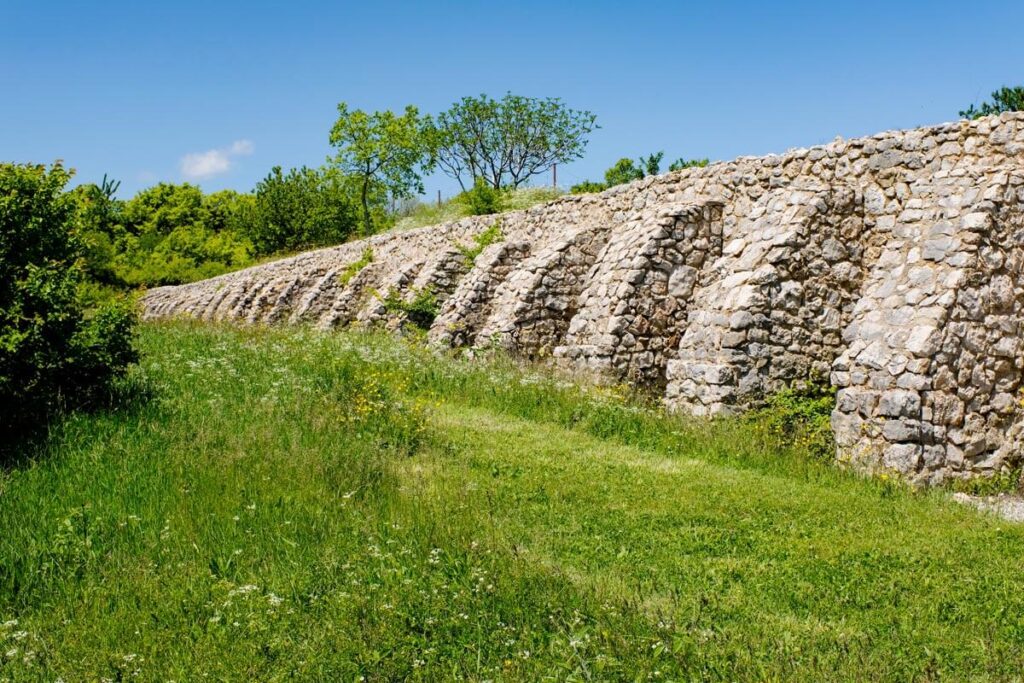
Cetina River viewpoint (33 kilometers)
On your way to Trilj, you’ll come across a beautiful viewpoint overlooking the Cetina River. The Cetina River is 105 kilometers long and drops 385 meters, creating excellent conditions for rafting in certain areas. From this viewpoint, you can enjoy a stunning view of a bend in the river, with the water’s blue/green hue enhanced by the elevation. Another great vantage point of the Cetina River and the town of Trilj is from the Crkva sv. Petra cemetery in Gardun (pictured below). From here, you can see the mountain peaks along the border with Bosnia.
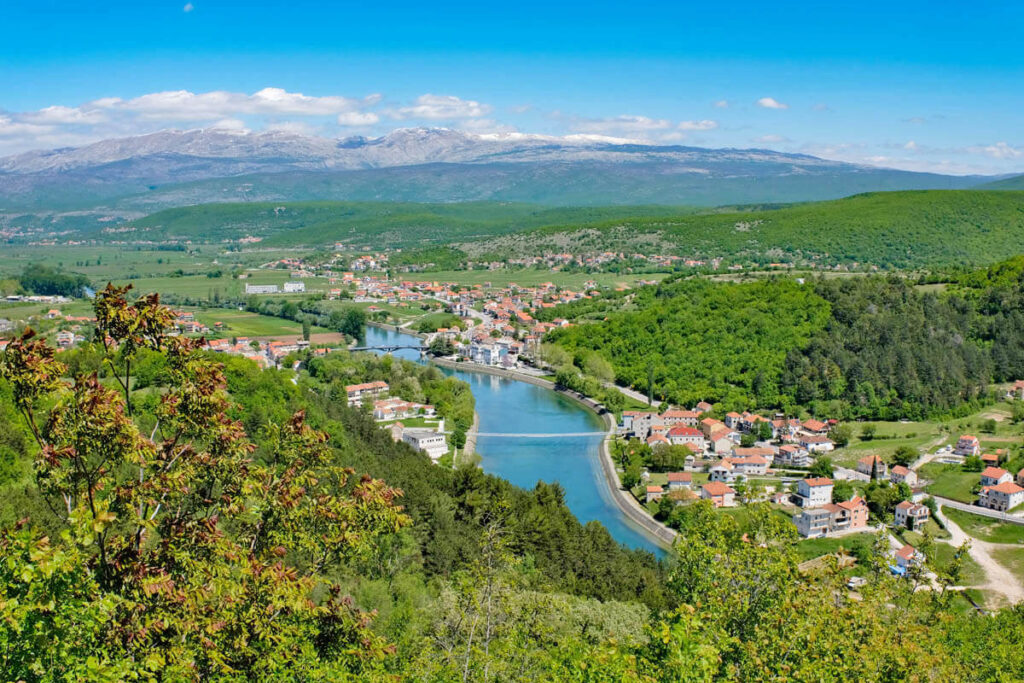
Ruins of Salona (8 kilometers)
If you’re a fan of excavations, you’ll enjoy exploring the ruins of Salona on the outskirts of Solin. Salona was once the most important city in the Roman Empire for a time. Among the remains, you can see a 5th-century cathedral, an amphitheater, city walls, a cemetery and public baths. The site of the cathedral’s remains is known as Manastirine. In the early 4th century, Bishop Domnius of Salona was buried here after being beheaded by Diocletian during the Christian persecutions. A century later, a cathedral was built on the same site. Many tombs are found at the cathedral site, along with remnants of the cathedral’s foundation.
In the same area, you can also see remains of public baths, housing and a large part of the city walls. The amphitheater further along was once capable of holding over 20,000 people. Although not much remains today, it’s still an impressive site.
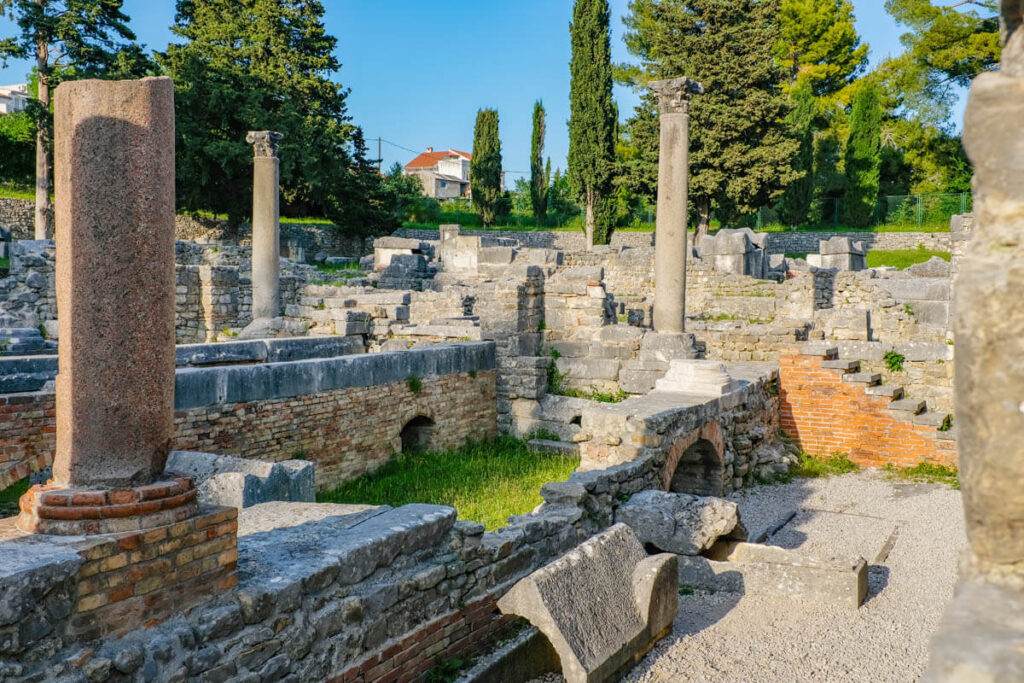
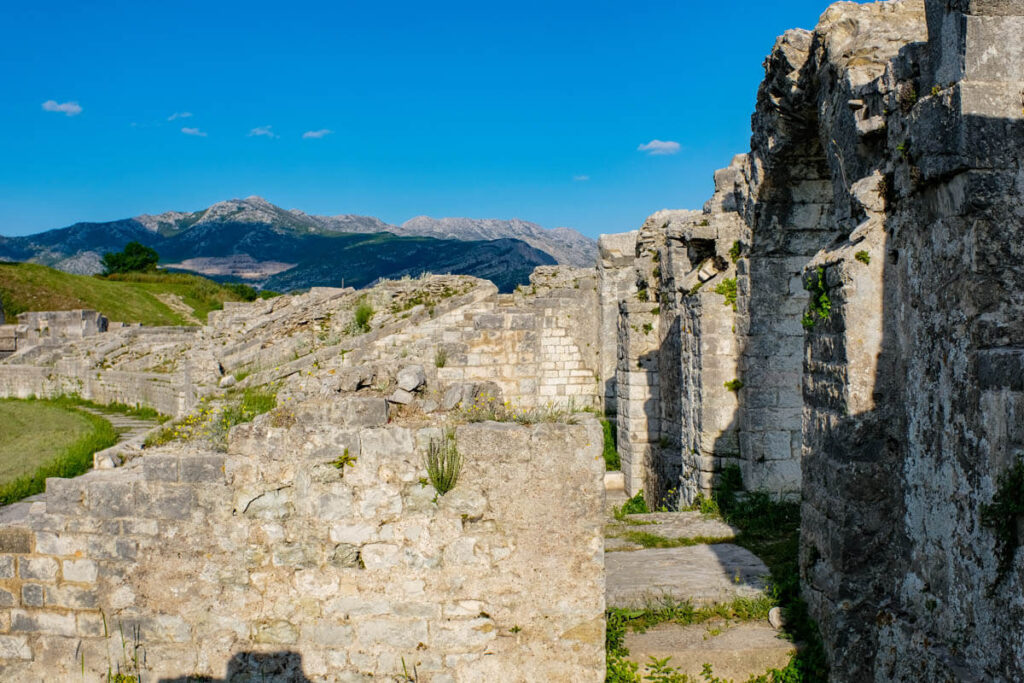
Day trip to Bosnia
From Split, it’s easy to cross the border into Bosnia. A beautiful city to visit in Bosnia is Mostar. It’s about a 2-hour and 15-minute drive from Split, making it a great destination for a day trip. There’s plenty to see and do in and around this city, which is most famous for the Ottoman bridge, Stari Most.